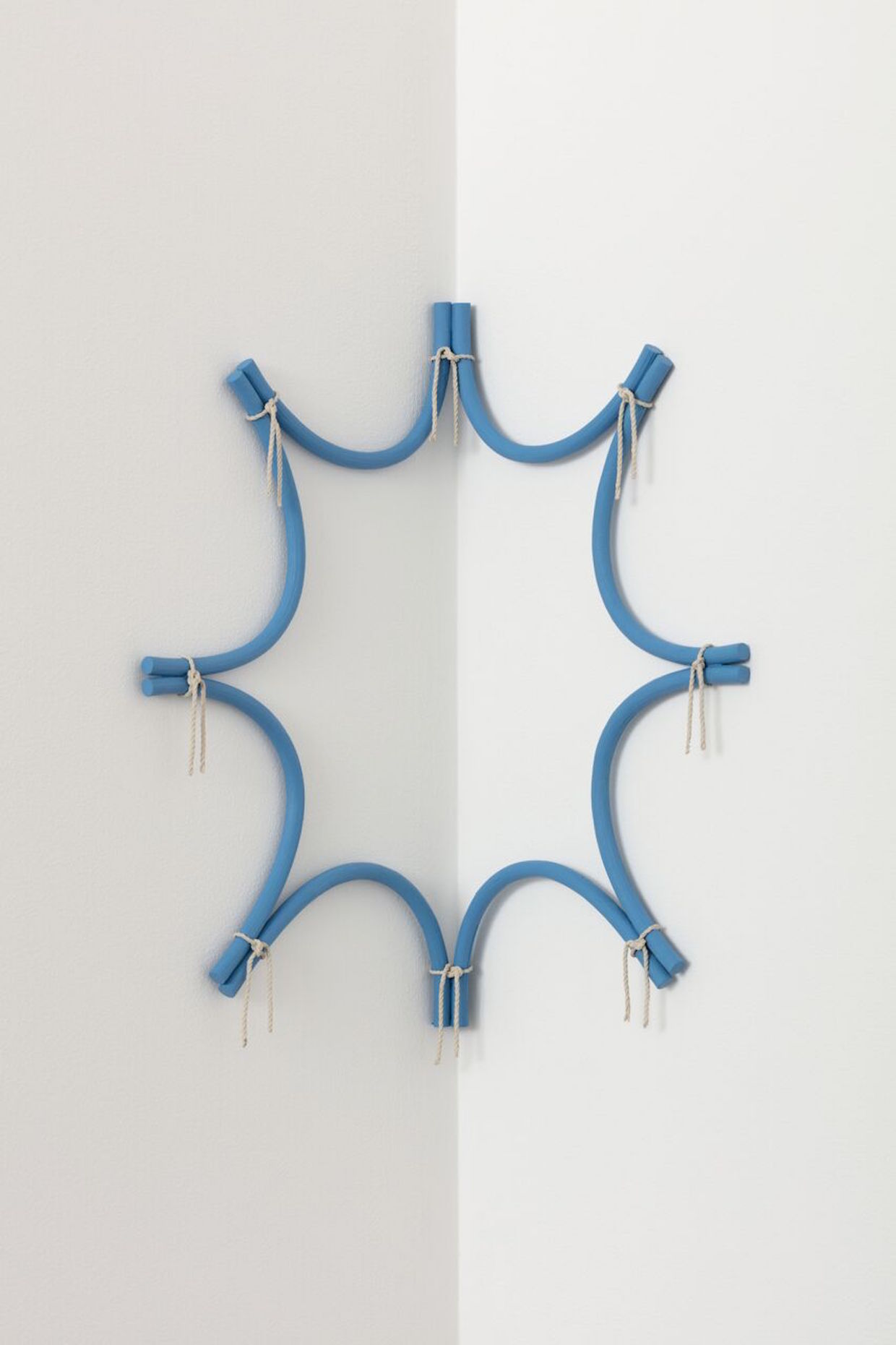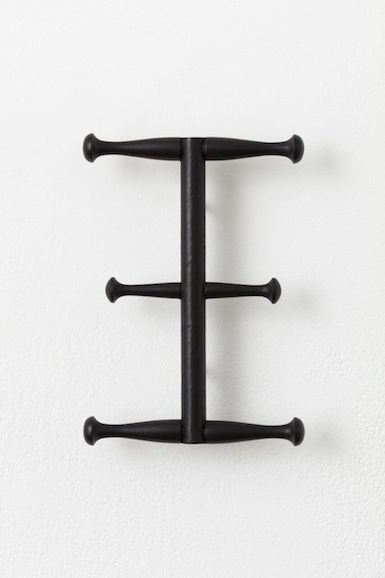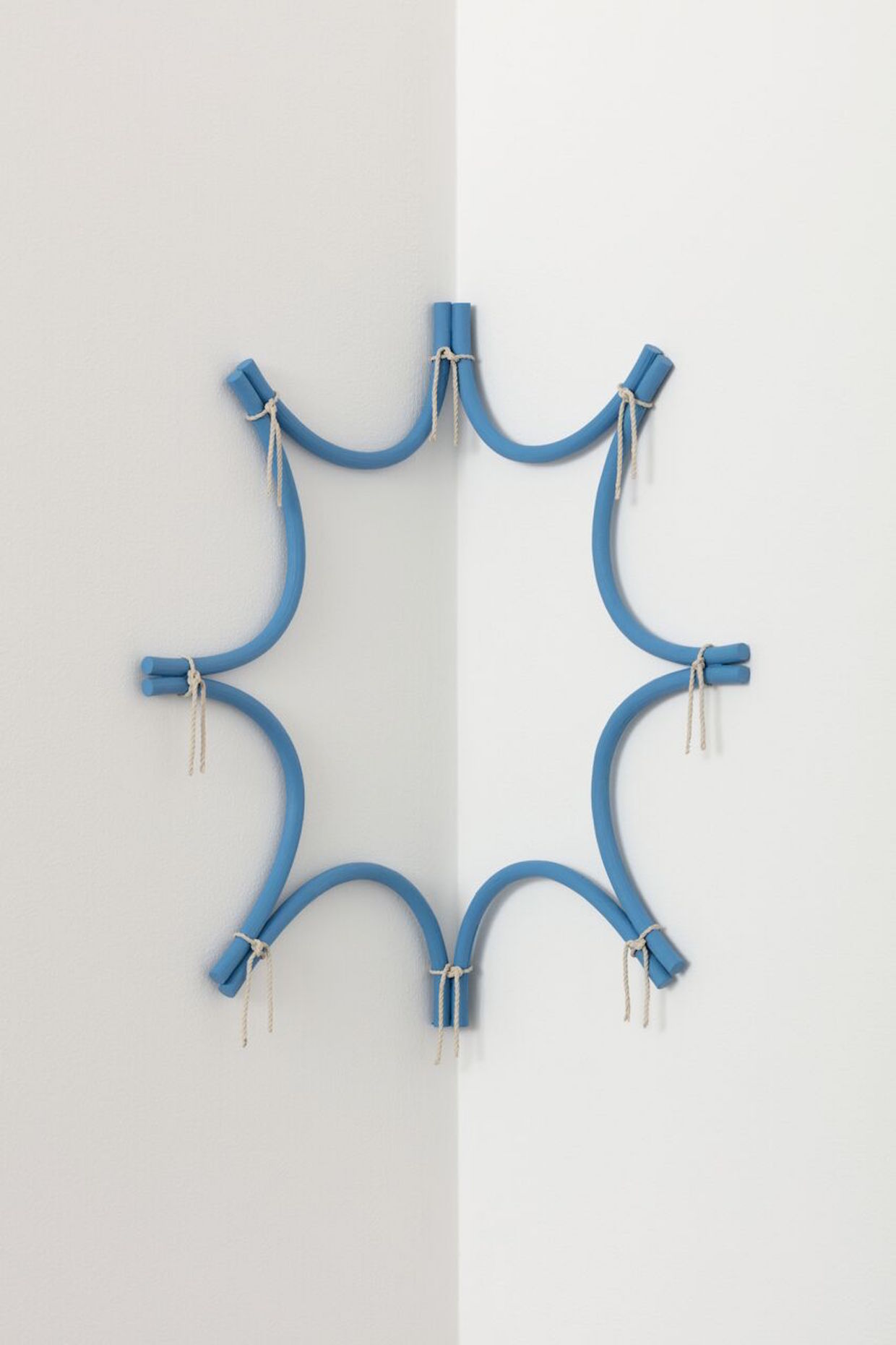[ad_1]

Ricky Swallow, Corner Burst (after F.B.), 2018.
FREDRIK NILSEN/DAVID KORDANSKY GALLERY
Most galleries are white cubes—clean, spotless spaces—and Los Angeles’s David Kordansky Gallery is no exception, save for the ivy crawling up the exterior of its concrete walls. But artist Ricky Swallow aims to add some pizazz to the gallery’s interior with his new solo show, “Shoulders,” which opens November 2. The artist thinks of the works in the exhibition as little exclamation points, he said in a phone interview from his studio in Burbank, California. “When I do a show, it’s very much like adding some punctuation to the walls or the floor of the space.”
The Kordansky exhibition will present eight works by the 44-year-old artist, who has become known for rendering everyday objects—a shoe, an umbrella, a flashlight—in materials like wood, metal, and cardboard. His new pieces—including a ball of rope suspended, and tubular lengths of rattan cane that lie on the floor—will be made with a favorite medium, bronze, and will also involve more humble ingredients, like rope and and tape. Of his choice to use that metal alloy, Swallow said that wood is sometimes too lightweight for what he wants to achieve in his sculptures. It’s “almost related more to furniture in its scale and weight,” he explained. “When it’s cast into bronze, it’s a very different thing: it becomes more industrially weighted.”
Weight is central to Swallow’s latest works. Corner Burst (after F.B.) (2018) was made by the artist using patinated bronze. The sculpture, which constitutes eight spokes that hold the abstract, structural piece in a corner through tension, is an unnatural cerulean blue because Swallow has added oil paint.
Using patinated bronze, he said, “is my way of locking [materials] down into some kind of permanence, because a lot of the pieces are made really rapidly in the studio, and they do have a kind of ephemeral or scratched-built quality.” The bronze “can sort of formalize” such materials “into more realized things or resolved things.”

Ricky Swallow, Double E (with pegs),
2015–18.
FREDRIK NILSEN/DAVID KORDANSKY GALLERY
Bronze naturally has all sorts of art-historical connections, from ancient Greek statues to the curving forms of modernist Henry Moore, and that legacy appeals to Swallow. “I like the challenge of working in very traditional techniques in unconventional ways,” he said, adding that, for him, it also refers to the earliest stages of his career.
Swallow got his start in sculpture when he was a child living in a town just outside of Melbourne, Australia, which has a strong fishing industry. He would often watch his father, a fisherman, pouring molten lead into molds for boat weights, and sewing fishing nets. Ropes and other industrial elements appear frequently in the artist’s work. (Representing Australia at the 2005 Venice Biennale, he showed Killing Time, a wooden table with tools to clean a day’s haul of fish that was strewn atop it, all alchemized into the same wood.) “It was very much a craft-based upbringing,” he said. “I always was making things.”
Though Swallow’s new pieces may not be useful for fishers, he does want them to serve a purpose within a gallery setting by activating the bones of the space. None of the sculptures appear on pedestals or mounts; instead, they are anchored directly to the wall or floor. In this way, Swallow sees them as communicating directly with the space in which they’re installed. Because of the way they’re situated in the Kordansky show, lodged in corners, they come to resemble furniture that isn’t for human use.
Other pieces in “Shoulders,” which runs through December 15, play with the history of readymades. One is a new untitled work, which was made by casting a chair in bronze and combining it with groups of braided ropes to make it impossible to sit on. When speaking about his technique, Swallow often refers to his work in terms that recall interior design. “Some of the finishes I’m trying to give to the pieces are more related to furniture finishes or ceramic glazes,” he said. “There’s a kind of warmth and domesticity to the material.”
Updated, 10/18/2018, 10:30 am: a previous version of this article incorrectly titled “Corner Burst (after F.B.). It has been corrected for this version of the article.
[ad_2]
Source link

